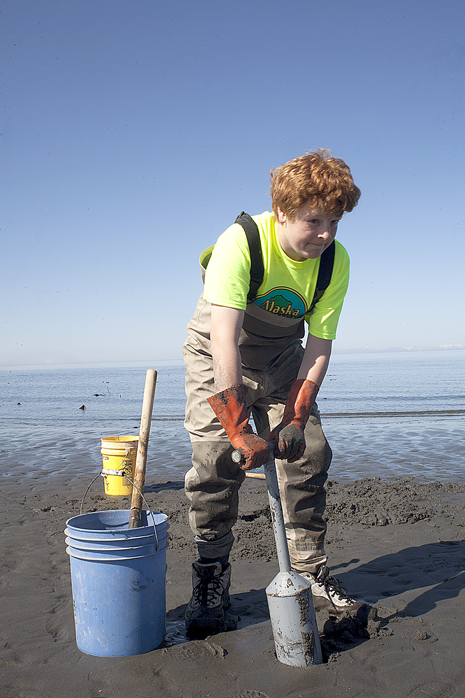Editor’s note: This story has been updated to correct the clam harvest numbers on Kenai Peninsula beaches from 2004-2013.
Cook Inlet clams on are on the Alaska Board of Fisheries’ plate as residents seek to manage a razor clam population that has crashed on the eastern side of the inlet and a fishery that has exploded in popularity on the western side.
The board will consider five proposals, including two which seek to reduce the personal use limit for razor clams on the eastern side of the Cook Inlet, one that would reduce the sport limit for razor clams in the same area, one that would close east side beaches to all razor clam harvest and one that would establish a personal use bag limit for razor clams on the west side of the inlet.
The east side clamming beaches, which stretch for about 50 miles between the Anchor River and the Kasilof River, were at one point the most popular fishery for clams in the Cook Inlet. According to Fish and Game managers clammers harvested an average of 391,185 clams per year in the fishery from 2004-2013.
However, the razor clam population has seen a precipitous decline in recent years. Fish and Game managers estimated that current average razor clam numbers are 80 percent lower than averages recorded between 1990 and 2012. In response managers closed clamming on the east shore — from the mouth of the Kenai river to the southern end of the Homer Spit — during the 2015 season.
As the east side beaches have declined, traffic on the west side clam beaches of the Cook Inlet has increased.
Rusty Roessler, of Pacific Alaska Shellfish, told board members that he has been harvesting clams commercially on the same nine miles of beach for 30 years.
“Previously, there was a little bit of sport guys coming over, it didn’t seem to affect the fisheries that much,” he said. “But as you’ve seen the east side has been closed down and we’re just seeing an increasing number going over there.”
There are no personal use bag and possession limits for West Cook Inlet and the board will consider a proposal to implement a harvest limit of 60 clams per day and 120 clams in possession.
The Board of Fisheries meeting will convene at 8 a.m. Thursday and can be streamed live at bit.ly/boardoffisheries.

